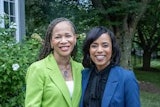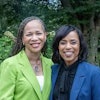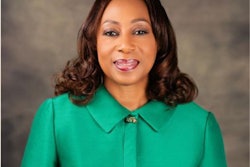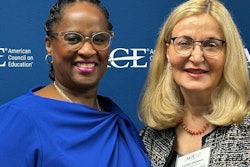ATLANTA
In Travis Brown’s sixth-grade class, they’re making robots — more than a dozen boys standing around work stations, chatting among themselves as they chop cardboard with scissors or glance at comic books for inspiration.
Down the hall, a room full of girls sit in near silence at their desks, working independently to put final touches on the same project.
The scenes last month at Atlanta’s Martin Luther King Jr. Middle School, are likely to become more common in coming years as a change in federal regulations is expected to make it easier for public schools to experiment with single-gender schools or classrooms.
Supporters argue boys and girls learn differently and that single-sex classrooms can help both genders perform better. Critics, meanwhile, compare it to “separate but equal” segregation-era classrooms.
At least 223 public schools across the country, from New York to California, already offer some single-sex classrooms, according to Leonard Sax, director of the National Association for Single Sex Public Education. He says that’s up from just four in 1998.
Sax predicts thousands more public schools will join the movement once the U.S. Department of Education finalizes new Title IX regulations first proposed in March 2004.
Backers of single-sex classes point to a growing body of research that shows the genders learn in different ways. At elementary school age, they say, girls’ vision and thought processes have developed to respond better to color and detail, while boys’ brains are more apt at processing motion and direction.
While those differences smooth out over time, they can have a big impact, single-sex advocates say.
“If you don’t understand those differences and you teach boys and girls as if they were the same, the end result is a kindergarten classroom where the boys tell you drawing is for girls and a middle school classroom where girls tell you computers are for boys,” said Sax, one of the nation’s leading proponents of single-sex education. “If you don’t understand gender differences, you end up furthering gender stereotypes.”
Not everyone agrees. A 2004 statement from the American Association of University Women says single-sex classrooms distract from real problems in schools and “would throw out the most basic legal standards prohibiting sex discrimination in education.”
Lisa Maatz, public policy director for the university women’s group, says not enough research exists to show that single-sex schools truly improve student performance.
“There are other ways to close the achievement gaps that are proven,” she says, mentioning smaller class sizes and extra training for teachers. “People are looking for a single silver bullet, but there’s no quick fix.”
Maatz sats the effort also appears to continue a Bush administration trend of chipping away at Title IX, which ensures equal opportunity for male and female students. “This is another attempt to modify, in a really unfortunate and unnecessary way, one of the most successful civil rights laws this country has ever had,” she says.
According to Sax, as more same-sex schools crop up, data is beginning to show results. He and other proponents point to an elementary school in Deland, Fla., where fourth graders last year were randomly assigned to either a single-sex classroom or a co-ed one.
In Woodward Elementary School’s co-ed classrooms, 57 percent of girls and 37 percent of boys passed a state writing test. In the single-sex classes, 86 percent of boys and 75 percent of girls passed.
“There is greater confidence, greater enjoyment, greater interest,” says David Chadwell, lead teacher at The Two Academies at Dent, a pair of single-gender middle schools in Columbia, S.C. “Also, on the teacher side, the teachers are enjoying teaching this way.
In Atlanta, single-sex classes have been conducted at several middle schools as part of a pilot program of sorts. Next year, Carson Honors Preparatory School will split into two campuses — one for boys and one for girls.
The middle school, where 69 percent of eighth-graders failed a state math test last year, draws its student body largely from two government housing complexes.
“The failure rate and the dropout rate in that particular area is enormously high,” says Atlanta Public Schools Superintendent Beverly Hall. “This is a strategy designed to really turn around what is a failing environment for lots and lots of young people.”
Hall and others in Atlanta say they like the results they’ve seen the past three years at Martin Luther King Jr. Middle School, where more than 400 sixth- and seventh-grade students are divided by gender.
Brown, whose boy’s math class was building the cardboard robots, says the system lets him gear his lessons specifically for an all-male class.
“It gives me a chance to prepare especially for them,” he says. “I know they like things that are sports-related; I know they’re going to have to get involved.
“I don’t expect them to sit still, so I know I’m going to have to have some hands-on stuff,” he says.
Current federal rules allow single-sex schools, but only when a district creates a comparable single-sex school for the other gender. That restriction would disappear under the proposed changes.
Rules for schools that offer only some single-sex classes also would be relaxed. Current rules allow such classes in specific cases, like gym classes that involve contact sports. The proposed changes would allow classes to be created any time administrators think they meet special needs for their students.
An overview of the proposed changes from the Education Department says that while discrimination against female students was widespread when the regulations were enacted in 1975, “the situation has changed dramatically.”
Sax says hundreds of school districts have expressed interest in the concept but are waiting for final word from the feds.
Currently, 32 states have public schools with at least some single-gender classrooms.
Most of those that have already made the move are in the South, where there’s less resistance to tweaking Title IX rules, Sax says.
“Culturally and historically, these regions have a history of single-sex education. It’s something people in these states tend to be more comfortable with,” he says, pointing to two Atlanta historically Black colleges; the all-female Spelman College and all-male Morehouse College. He also notes that The Citadel in South Carolina was all male until 1995.
Education Department officials have said their final regulations should be unveiled this summer. June 23 will mark the 34th anniversary of Title IX.
— Associated Press
© Copyright 2005 by DiverseEducation.com


















